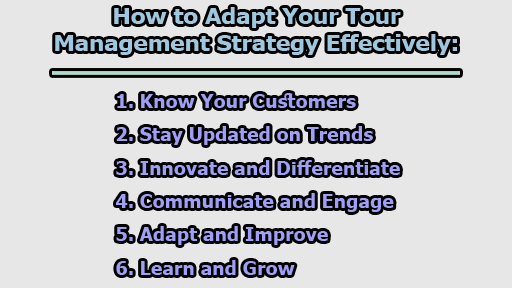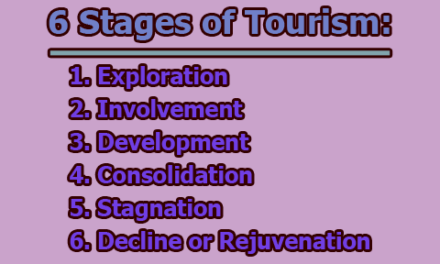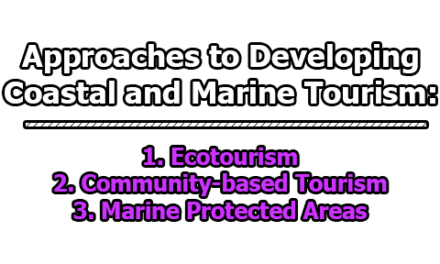How to Adapt Your Tour Management Strategy Effectively:
In the ever-evolving world of tourism, where customer expectations and trends are constantly shifting, tour managers face the challenge of staying relevant and competitive. Adapting your tour management strategy to these changes is crucial to ensure your business’s success. To achieve this, it’s essential to follow a structured approach that encompasses knowing your customers, staying updated on trends, innovating and differentiating, communicating and engaging, adapting and improving, and finally, learning and growing as a tour manager. Let’s delve into each of these steps to gain a comprehensive understanding of how to adapt your tour management strategy effectively.
1. Know Your Customers: The foundation of any successful tour management strategy is a deep understanding of your customers. You must recognize their motivations, needs, preferences, and feedback. Utilize various tools and methods, such as surveys, reviews, social media, CRM systems, and analytics, to collect and analyze customer data. By segmenting your customer base into different groups, you can tailor your tours and services to meet their specific requirements.
2. Stay Updated on Trends: The tourism industry is highly dynamic, and staying abreast of the latest trends and developments is imperative. Regularly monitor the market, competitors, destinations, technology, and regulations. Utilize sources like newsletters, blogs, podcasts, webinars, and trade shows to keep yourself informed. By staying updated on trends, you can anticipate and respond to changing customer expectations and demands promptly.
3. Innovate and Differentiate: To stand out in a crowded market, it’s vital to innovate and differentiate your tours and services. Offering something unique, valuable, and memorable sets you apart from the competition. Create niche tours, add personal touches, incorporate local experiences, and leverage technology to enhance your offerings. Innovation and differentiation attract and retain more customers while increasing their satisfaction and loyalty.
4. Communicate and Engage: Building trust, rapport, and relationships with your customers is essential. You must make them feel valued and appreciated throughout their journey, from the first inquiry to post-tour follow-up. Utilize various communication channels and methods, such as email, phone, social media, chatbots, and newsletters. By fostering open and meaningful communication, you can increase customer awareness, interest, and retention, and encourage referrals and reviews.
5. Adapt and Improve: To ensure the continued success of your tour management strategy, it’s crucial to adapt and improve based on feedback and results. Regularly measure and evaluate the performance and outcomes of your tours and services, identifying strengths, weaknesses, opportunities, and threats. Utilize tools and metrics such as Key Performance Indicators (KPIs), benchmarks, SWOT analysis, and the PDCA (Plan-Do-Check-Act) cycle. By adapting and improving, you can optimize your tour management strategy and ensure its ongoing relevance and effectiveness.
6. Learn and Grow: The final step in adapting your tour management strategy is to learn and grow as a tour manager. As the industry evolves, it’s essential to update and enhance your skills, knowledge, and competencies continuously. Seek opportunities for continuous improvement and development through courses, certifications, coaching, mentoring, and networking. By investing in your own growth, you become a more professional, competent, and successful tour manager.
In conclusion, adapting your tour management strategy to changing customer expectations and trends is a multifaceted process that requires dedication and a structured approach. Knowing your customers, staying updated on trends, innovating and differentiating, communicating and engaging, adapting and improving, and learning and growing are the six key steps to success. By consistently implementing these strategies, you can thrive in the dynamic world of tourism and continue to meet and exceed your customers’ expectations.

Former Student at Rajshahi University










